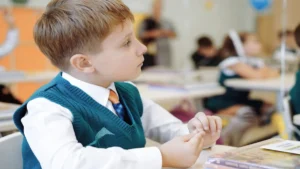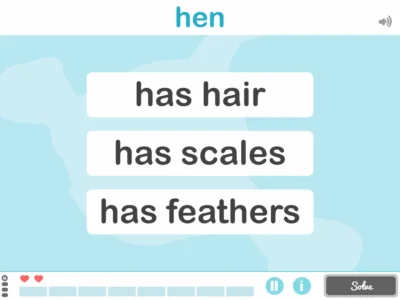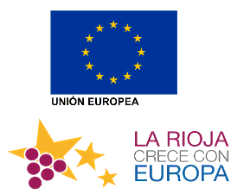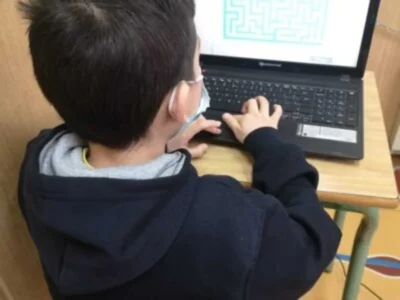Neuropsychologist María Eugenia Ramírez Vadillo lays out in this article all the details about the importance of psychoeducation in child development and presents the success story of a child with ADHD.
What is psychoeducation?
How many times have you felt that raising a child is a challenge that doesn’t come with clear instructions? If you’re a parent, teacher, or therapist, you know that each child has a unique emotional and cognitive world. This is where psychoeducation transforms lives.
Since I began my therapeutic practice, I have been surprised by how little, as professionals, we promote teamwork. Psychoeducation, however, has become the key tool that has allowed our clinic to be recognized for making a difference.
The definition of psychoeducation is found with Dr. Bulacio and reads verbatim: “Psychoeducation is understood as the process that allows providing patients the possibility to develop, and strengthen their abilities to face diverse situations in a more adaptive way.”
Psychoeducation in child development
Children tend to come to therapy either because of “complaints” from their teachers or because they cannot be “controlled” at home. Upon arriving at the clinic they found a relaxed and organized environment, parents received work reports and some tools for home.
The suggestions were within the framework of almost any textbook but the parents of our little ones kept the suggestion for a week and then forgot it or didn’t make the attempt because “it’s too much”, “it’s an absurd suggestion”, “it’s a ridiculous tool”.

Subscribe
to our
Newsletter
What did we notice?
Psychoeducation is very important in child development due to the great emotional burden that comes with being parents. Many of them have their own diagnoses on the neurodivergent spectrum.
Indeed, the questions we kept asking ourselves included:
- How do you ask a caregiver to teach their children to have a cleaning routine if they themselves have trouble washing a plate?
- How do you facilitate reading in a child when his mother cannot get past the first line of the book she keeps on the bedside table?
- How do you support your child with stage fright when they present if you, their father, are embarrassed to correct the change at the supermarket checkout when you realize they gave you the wrong amount?
Herein lies the importance of psychoeducation in child development.
Mothers, fathers and teachers, together with therapists, require psychoeducation; which leads us to awareness of our own limitations, unlearning and relearning, breaking paradigms.
Key areas in psychoeducation for children
1. Emotions and feelings
The age of children affects the expression of emotions. The brain, divided into right and left hemispheres (emotional and logical), still doesn’t work as a team; this makes their reaction to various situations generally come from “the gut” with phrases that parents find exaggerated: “I’m going to die!, You don’t love me anymore!”. In short, “an emotional tsunami”.
If your maternal/paternal reaction comes from your left hemisphere trying to explain facts, your child’s response will be chaos; there is no emotional containment in a rational explanation.
And on the other hand, if your maternal/paternal response comes from the emotional hemisphere, the drama and tantrums will appear immediately.
The idea of psychoeducation is to provide parents with tools to react in the useful time from the emotional hemisphere: to contain, talk about the event, fill in the details and proceed with the current activities (including going to bed if it occurs at that moment).
2. Neurodevelopment
It includes the particular cognitive, biological and social processes that lead the child to autonomy and self-care.
We raise awareness about neural plasticity and include neuropsychology activities like those we apply in CAISEM with the NeuronUP platform.
3. Language development
The child requires a clear language appropriate to their age. Some children come to our practice with language delays, which makes communication with their peers difficult.
The speech therapy is included in psychoeducation.
4. Social interaction
Psycho-expression leads children to discover socialization tools, to modulate their voice, to perform readings aloud, to become familiar with stories, poems and plays, and to gradually lose the fear of facing an audience.
5. School development
With teacher support, we encourage the use of sensory material to help the child’s concentration in the classroom.
We know the limitations when groups are very large and that some schools have very rigid protocols. If we are in that position, we usually do not insist. School-based psychoeducation in some places is still in its infancy.
6. Home environment
It is the most important in psychoeducation since it is the safe place where the child navigates the individual and collective needs of the family.
Caregivers need to observe their own attitudes and limitations to give themselves the opportunity to make mistakes.
How do we implement it?
For the integration of the body and emotional schema we use:
- Play therapy, emotional therapy, speech therapy, Psycho-expression, music therapy and dance therapy.
- For the learning and neurodevelopment area, we use the sensory swing and the tablet with the NeuronUP platform. Some of our young patients spend too much time on electronic devices. For them, we prepare NeuronUP activities on paper.
- We send activities home.
What is the impact of psychoeducation on children and their parents?
Psychoeducation significantly influences two pillars of child development: learning and emotional well-being.
Impact of psychoeducation on learning
By providing tools to parents, teachers and therapists, children benefit from a structured and understanding environment. For example:
- Clear and consistent routines: Facilitate mental organization and promote autonomy.
- Multisensory activities: Stimulate attention, memory and creativity, making learning a meaningful experience.
- Personalized strategies: In cases of neurodivergence, such as ADHD or dyslexia, adaptations based on the parent’s own neurodivergence make the child feel capable and motivated.
Impact of psychoeducation on emotional well-being
- Psychoeducation allows adults to recognize and validate children’s emotions, reducing the incidence of frustrations and family conflicts.
- By working on emotional self-regulation, children develop resilience and self-confidence.
- Promotes healthier relationships with their peers, improving school and social coexistence.
We share a practical case from our facilities; we changed details to protect our patient and in compliance with information security law.
Success story: Juan and the magic of psychoeducation
Juan, 8 years old, came to the clinic because his father had died the previous month. As his bereavement therapy progressed, we received the “complaint” from his teacher saying it was “impossible to keep him still” and he refused to participate in presentations. At home, his mother was desperate because any routine seemed like a battlefield and, furthermore, Juan used to fight with his classmates and his younger brother even before his dad’s death.
One day the mother received a call from the father’s psychiatrist indicating that the gentleman had ADHD.
We decided to refer him to our neuropsychological clinic and after evaluating him, we discovered he had difficulties in emotional self-regulation and a profile compatible with ADHD, as shown in the result of his screening test:
3. School
We spoke with his teacher and proposed brief breaks between activities. Sensory materials were also introduced to help Juan maintain concentration.
The school psychologist was willing to support, however the classroom itself was a point of concern. The room consisted of almost 25 students and the teacher found it difficult to support Juan.
Results
In the six months we’ve been working together, Juan has shown significant changes. He feels more confident interacting with his peers, can remain focused for longer and, although he is not yet able to sit still, he has begun to present his work in class, even if at first they were small participations. Conflicts at home decreased, and his mom reports feeling more connected to him and to the rest of the family.
There is work left to do. However, the most noticeable changes are the behavioral changes Juan has promoted in himself and the recovery of his self-esteem.
Conclusion
Psychoeducation reminds us that no child is destined to ‘fail’, but rather each one needs specific tools to shine. When the adults around them educate themselves emotionally and cognitively, the impact on the child is immediate: they feel understood, valued and capable. There is no better investment than working together so that children grow with the confidence and skills needed to face the world.
At CAISEM, together with NeuronUP, we are creating an easier path for this psychoeducation to be comprehensive and to produce appropriate results for each need on the neurodivergent spectrum.
Bibliografía
- Bulacio, Juan Manuel, et al. (2004). El uso de la Psicoeducación como estrategia terapéutica. XI Jornadas de Investigación. Facultad de Psicología-Universidad de Buenos Aires, Buenos Aires. https://www.aacademica.org/000-029/16
- Siegel, Daniel & Payne Bryson, Tina. (2020) El Cerebro del niño. Edit. Alba.
If you liked this blog post about psychoeducation in children: key strategies for cognitive and emotional development, you will likely be interested in these NeuronUP articles:
“This article has been translated. Link to the original article in Spanish:”
Psicoeducación en niños: Estrategias clave para el desarrollo cognitivo y emocional







 Cognitive Workshop with NeuronUP for Schizophrenia Intervention
Cognitive Workshop with NeuronUP for Schizophrenia Intervention
Leave a Reply